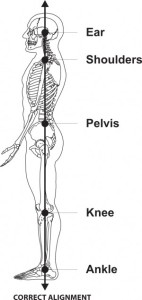 There are a multitude of ways to teach voice. Of course, speaking directly to the student and describing in clear terms what you would like them to do often works well. Suggesting that they listen to other singers in their genre is helpful. But sometimes the addition of a tool or image can help the student create the proper sensation and/or sound. And from this experience the student tries to create the proper sensation/sound again by remembering what it felt like the first time. A bit like a scientific experiment which must be able to be recreated to be valid, the student can create the proper sound with a tool, but must be able to recreate it on their own.
There are a multitude of ways to teach voice. Of course, speaking directly to the student and describing in clear terms what you would like them to do often works well. Suggesting that they listen to other singers in their genre is helpful. But sometimes the addition of a tool or image can help the student create the proper sensation and/or sound. And from this experience the student tries to create the proper sensation/sound again by remembering what it felt like the first time. A bit like a scientific experiment which must be able to be recreated to be valid, the student can create the proper sound with a tool, but must be able to recreate it on their own.
A direction I often use for landing the pitch correctly on the tone (especially, perhaps, a higher tone which may be more difficult) is to land the tone from above. With this I often use a hand movement: my palm, facing out, moves up in front of me and then the fingers curl over like a waterfall, landing ‘on top of the tone.’ When the singer does this hand motion as he moves toward and lands on the pitch, he tends to release the tension that sometimes comes with reaching for a pitch. He holds his neck straighter, tends not to lift his chin and keeps his throat more open.
Another hand movement I like to use is related to singing a sustained line. In other words, singing truly legato, the sound never stopping during the phrase. The index finger is close to the chest and pointed outward. As the student sings the phrase, their finger slowly moves outward, mimicking the line of unbroken sound. The visual image and the slow movement of their finger also helps the student maintain the constant support and steady tone which creates that legato phrase.
I once attended some master classes by the late Master Teacher Shirlee Emmons, and she used Theraband resistance bands to great effect in teaching proper support. If a student is having problems singing a particular phrase on one breath, fold the theraband in half and have her hold the doubled band, a hand on either end, arms straight out at shoulder height. As the singer takes the breath for the phrase, she begins pulling her arms apart, gently stretching the band and continuing to do so throughout the phrase. As the singer reaches the end of the phrase, she releases the tension on the band and then begins pulling gently again as she takes another breath and begins a new phrase. The gentle tension (make sure the arms are straight out at shoulder height) engages the muscles of inspiration, keeping too much air from coming out and keeping the support under the tone. It’s magic!

